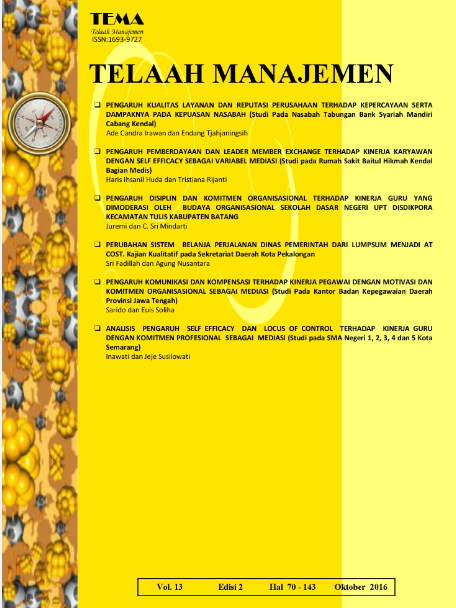ANALISIS PENGARUH SELF EFFICACY DAN LOCUS OF CONTROL TERHADAP KINERJA GURU DENGAN KOMITMEN PROFESIONAL SEBAGAI MEDIASI (Studi pada SMA Negeri 1, 2, 3, 4 dan 5 Kota Semarang)
Abstract
This study is intended to examine and analyze the effect of self efficacy and locus of control on employee performance with professional commitments as mediation (Study on Teacher SMA Negeri 1, 2, 3, 4 and 5 Semarang), arguing that the five schools are schools became the order of the first choice for the city of Semarang. The population in this study was 402 people. In this study Proportional sampling using accidental sampling that proportional sampling and every teacher who encountered can become members of the sample, it can be seen the number of samples in this study were 200 respondents. Mechanical testing of the data used in this study include test the validity of factor analysis, reliability test with Cronbach alpha formula, normality test, classic assumption test, test the fit model, determination coefficient and multiple regression test. From the analysis of the data found that the Self Efficacy positive and significant impact on the professional commitment, Locus of Control positive and significant impact on the professional commitment, Self Efficacy positive and significant impact on teacher performance, Locus of Control positive and significant impact on teacher performance. Professional commitment is also positive and significant impact on teacher performance, but professional commitment is not a variable that mediates self efficacy and locus of control on teacher performance.
Keywords: self-efficacy, locus of control, professional commitment and performance of teachers








